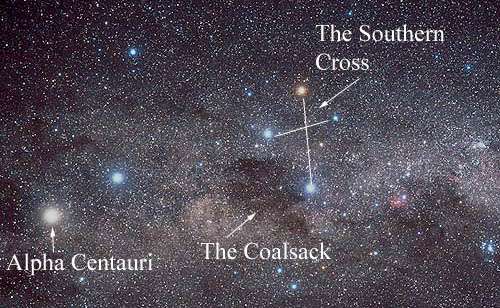Planets at Alpha Centauri?

Our nearest stellar neighbor, Proxima Centauri, a mere 4.3 light-years away, is not alone.
This red dwarf star is companion to a binary system consisting of two stars similar to our sun, alpha Centauri A and B. This binary system is of obvious relevance to astronomers, astrobiologists, and space tourists of the future. A recent announcement by the Breakthrough Starshot project to study the feasibility of sending actual hardware to this triple-star system has increased our interest in these stellar neighbors.
However, even the most naive traveler would like to know whether acceptable accommodations are in the offing once their destination is reached, and consequently scientists at the NASA Ames Research Center have been investigating how an Earth-mass planet would behave if it formed within the habitable zone of either alpha Centauri A or B.
Using numerical simulations, Billy Quarles and Jack Lissauer have shown that a single Earth-mass planet in orbit around either star can remain within the system on a billion year timescale. This is important as other scientists at NASA Ames are designing a new space-based mission, ACESat, to directly image any terrestrial worlds lurking next door.
The orientation as well as the size of the orbit could affect the chances of observing any such planets. Quarles and Lissauer demonstrate that an Earth-like world can exist in an orbit for a billion years tilted by up to 40° relative to the binary orbital plane when the semimajor axis of the orbit is less than 2 AU, twice the distance from the Earth to the sun. A planet beyond 2 AU would become unstable because of the strong gravitational perturbations caused by resonances with the secondary star.
At even larger distance, retrograde ("backwards") orbits, opposite to the direction of the stars about their center of mass, are stable. The researchers also considered the case where the planet forms within the orbital plane of the binary, but has a substantial non-circular (eccentric) orbit. These too seem stable. The possible climates of Earth-analogs in eccentric orbits orbiting either star in alpha Centauri would likely be much different than ours, and one would definitely want to arrive in the right season. But, knowing how extreme these orbits can get is crucial in designing the instruments to discover them.
There have already been some searches of the alpha Centauri system for habitable planets. In 2012, Xavier Dumusque and collaborators reported the possible detection of an Earth-mass planet in a scorching three-day orbit around alpha Centauri B. This possible discovery was based on years of radial velocity measurements from HARPS, a high precision instrument in Chile that can measure the back and forth motions of stars. However, these results have been recently questioned by Vinesh Rajpaul and collaborators who claim that the putative planet is no more than a 'ghost' introduced by faults in the data analysis. As observational techniques improve and are extended to space-based instruments, the possibility of confirming these discoveries and finding planets in even the most hostile dynamical environments will improve.
Provided by SETI Institute



















